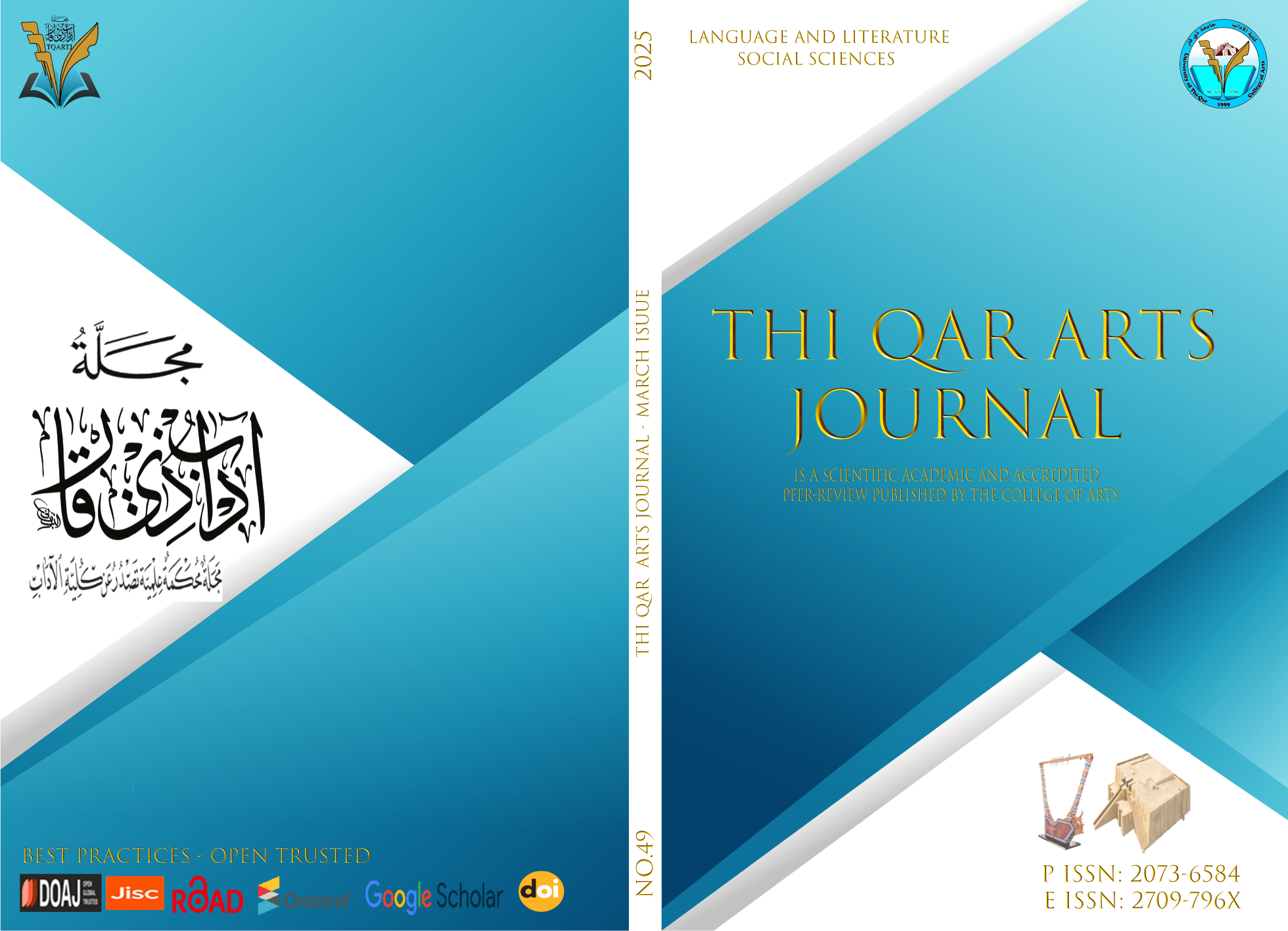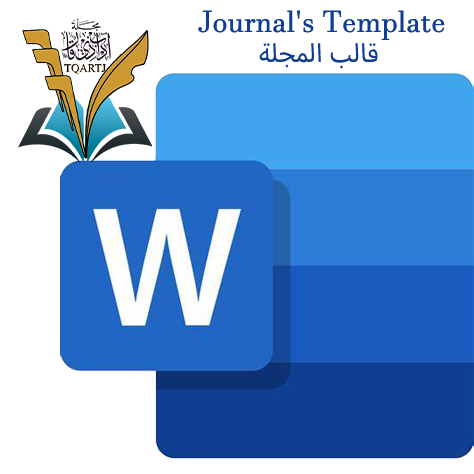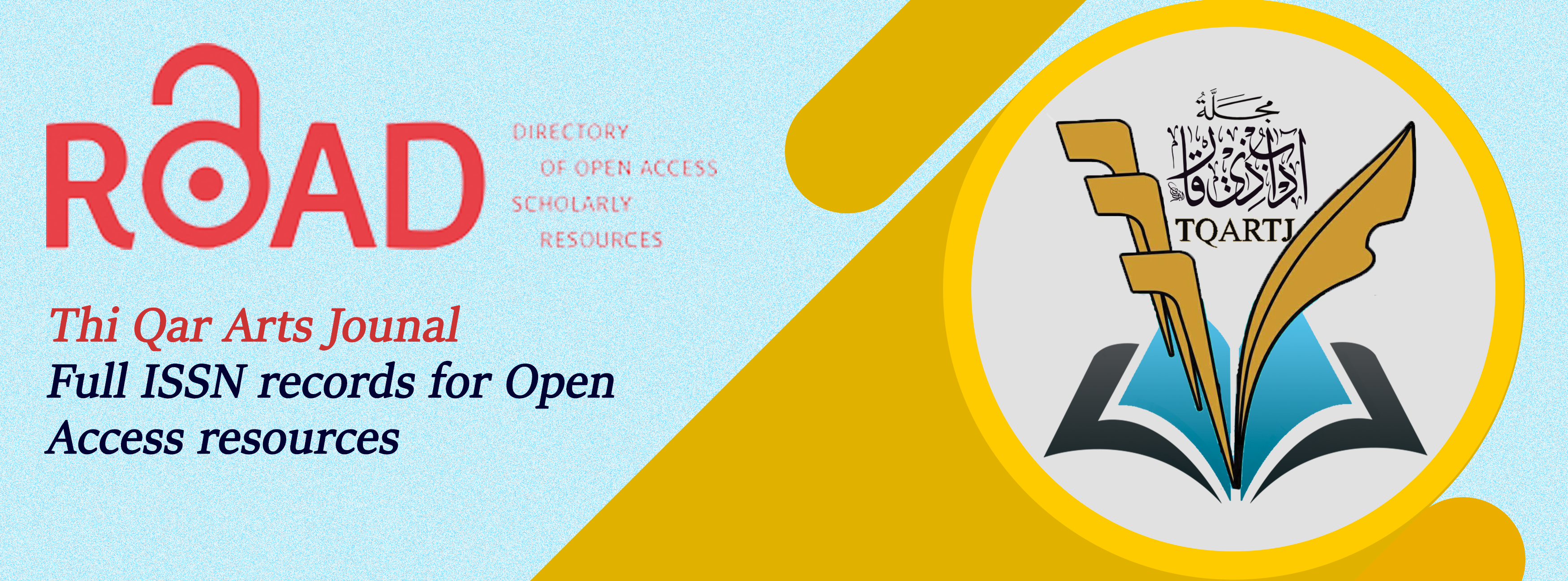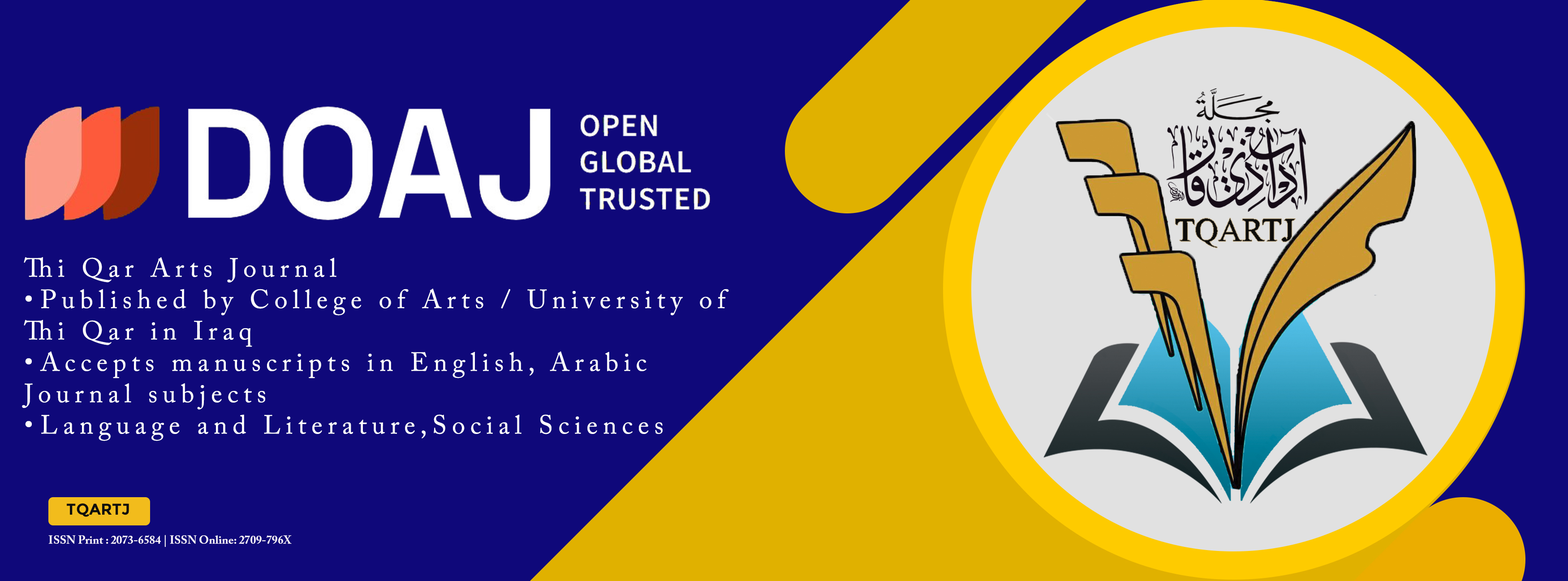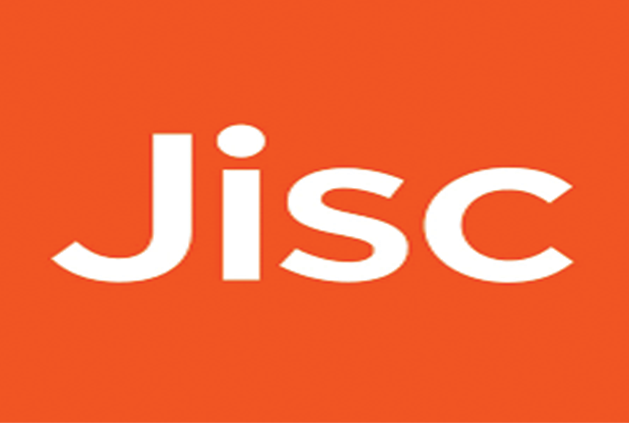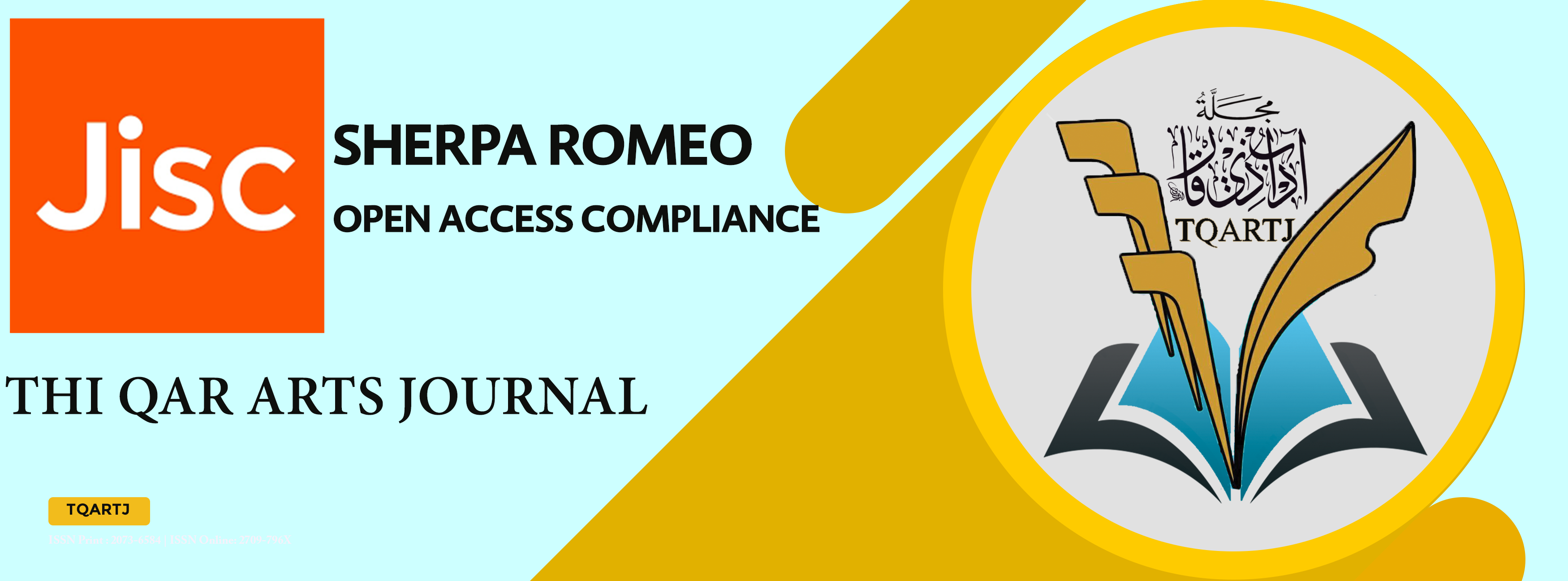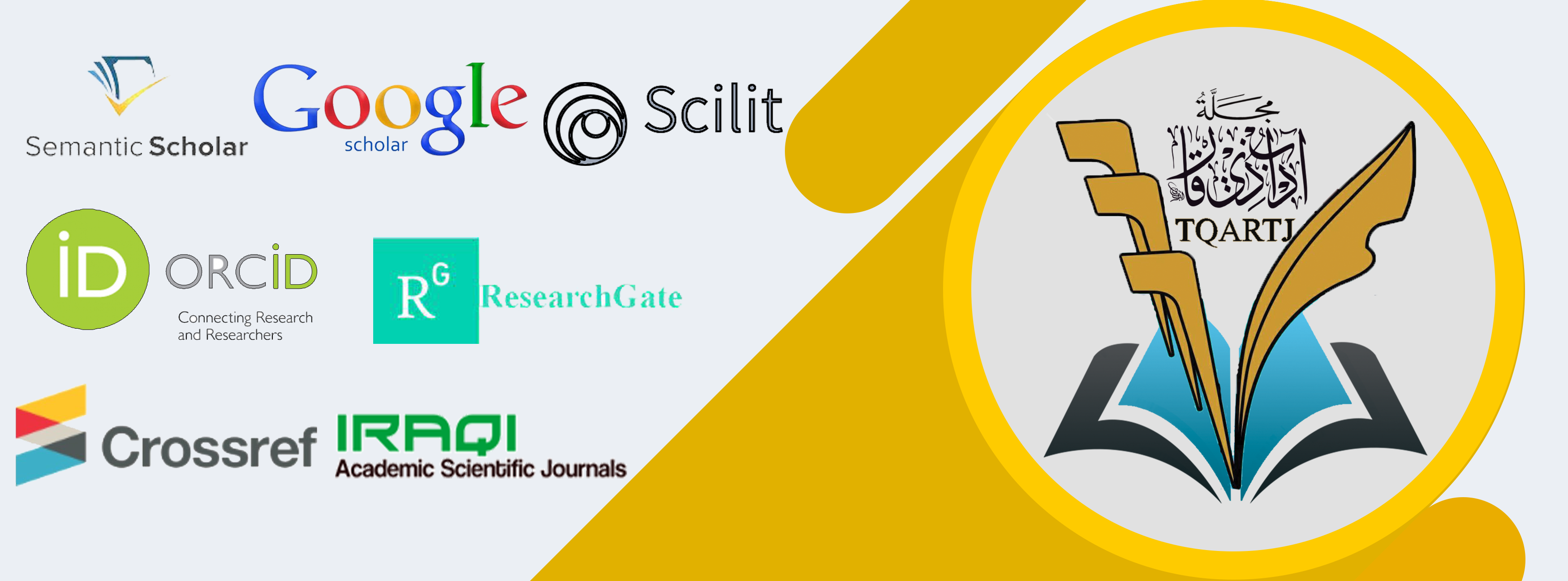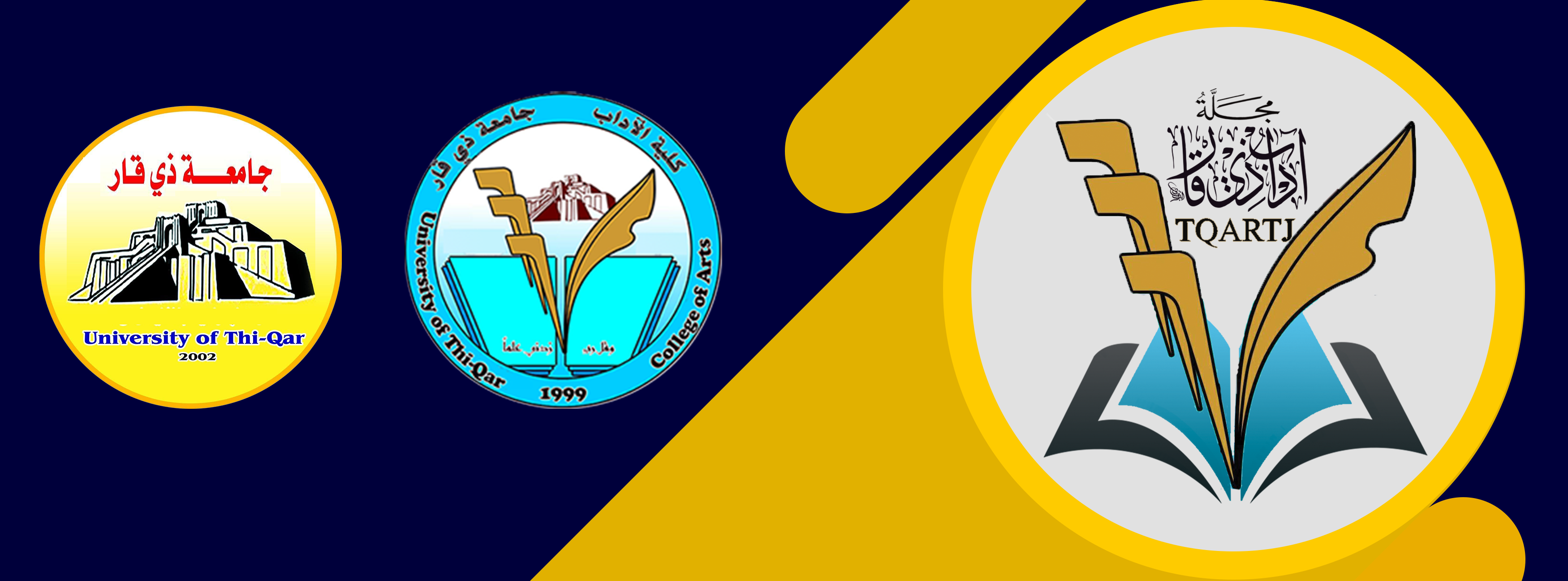Metaphors of 'Worldly Life' and 'Hereafter' in the Holy Quran: A Conceptual Approach
DOI:
https://doi.org/10.32792/tqartj.v1i49.778Keywords:
Conceptual Metaphor Theory, mapping, Worldly Life, HereafterAbstract
Conceptual Metaphor is a theory that is associated with cognitive semantics, in which metaphor is seen as a process of understanding one conceptual domain in terms of another. The present study focuses on the cognitive metaphorical uses of some expressions that talk about the Worldly Life (ٱلْحَيَوٰةَ ٱلدُّنْيَا) and the Hereafter ( الآخرة) in the Holy Quran. An electronic research has been made for only the verses that contain the expressions ‘the Worldly Life’ (ٱلْحَيَوٰةَ ٱلدُّنْيَا) and ‘the Hereafter’ ( الاخرة) in the Holy Quran. Lakoff and Johnson’s (1980) model of Conceptual Metaphor Theory is adopted for the analysis of the Quranic verses. The Quranic texts under study are translated into English, as the first procedure, before they are analyzed by the aid of Lakoff and Johnson’s (1980) Conceptual Metaphor Theory. There is a tendency by the Holy Quran to make a conceptual mapping between the concept of ‘Worldly Life’ and the concepts of being 'worldly,' 'trivial,' 'temporary,' 'short-living,' etc. Whereas the conceptual mapping is to be made between the concept of the ‘Hereafter’ and the concepts of being 'heavenly,' 'precious,' 'constant,' 'ever-lasting,' etc.
Downloads
References
References
Ahrens , K. (2016). Mapping Principles for Conceptual Metaphors. In L. Graham, & T. Zazie (Eds.), Researching and Applying Metaphor in the Real World (pp. 8-13). John Bengamin.
THE HOLY QUR' AN: ARABIC TEXT AND ENGLISH TRANSLATION. (1982-2003). (M. S. Ali, Trans.) Islam International Publication Limited.
Al-Kashani, F. (1975). Al-Asfa fi Tafsir al-Quran. Markaz al-Nashr.
Al-Razi. (2000). Al-tafsir Al-kabir (The Great Exegesis) (20 ed.). Dār al - Kutub al - Ilmiyah.
Al-Tabarani, S. (2008). Al-Tafsir Al-Kabir. Dar al-Kitab al-Thakafi.
Berrada, K. (2006). Metaphors of light and darkness in the Holy Quran: A conceptual approach. (Master’s thesis). Faculté des Lettres et des Sciences Humanies Ben M’sik, Casablanca.
Crystal, D. (2008). Dictionary of Linguistics and phonetics. Blackwell publishing Ltd.
Gibbs, R. W. (1999). Taking metaphor out of our head and putting it into the cultural world. In R. W. Gibbs, & G. Steen, Metaphor in Cognitive Linguistics (pp. 146–166). John Bengamin.
Group, P. (2007). MIP: A method for identifying metaphorically used words in discourse. Metaphor and symbol, pp. 22 (1), 1-39.
Ibn-Kathir. (2003). Tafsir Ibn- Kathir (V 5 ed.). (S. R. Almubarakpuri, & group of scholars, Trans.) Darruslam.
Kövecses, Z. (2005). Metaphor in Culture: Universality and Variation. Cambridge University Press.
Lakoff, G., & Johnson, M. (1980). Metaphors we live by. University of Chicago press.
Lakoff, G., & Turner, M. (1989). More Than Cool Reason: A Field Guide to Poetic Metaphor. University of Chicago Press.
Saeed, J. (2003). Semantics. Blackwell Publishing.
Salamah, H. M. (2002). Al-i’jaz al-balaghi fi al-qur’an al-karim [The miraculous rhetoric in the Holy Book of Qur'an. http://ia802906.us.archive.org/20/items/waq57214/57214.pdf.
Sani, I., & Ruma, M. (2014). Concretizing the abstract: Conceptual metaphors in the holy. pp. 2(8), 11000–11012.
Sani, I., & Ruma, M. (2014). Concretizing the abstract: Conceptual metaphors in the holy Qur'an. (European Academic Research), pp. 2(8), 11000–11012.
Shirazi, N. (1926). Amthal fi Tafsir Kitab Allah al-Manzal. Dar Ihya al-Turuth al-Arabi, Beirut.
Soskice, J. M. (1988). Metaphor and Religious Language. Clarendon.
Tabataba'i, M. H. (1979). Al - Mizan , An Exegesis of the Quran (V 1 ed.). (S. Rizvi, Trans.) WOFIS ... World Organization For Islamic Services ( WOFIS ).
Published
License
Copyright (c) 2025 Lect. Dr. Aziz Khalaf Abid Saleh, Assist. Lect. Malak Hassan Hussein Khader

This work is licensed under a Creative Commons Attribution 4.0 International License.
The journal applies the license of CC BY (a Creative Commons Attribution International license). This license allows authors to keep ownership of the copyright of their papers. But this license permits any user to download, print out, extract, reuse, archive, and distribute the article, so long as appropriate credit is given to the authors and the source of the work. The license ensures that the article will be available as widely as possible and that the article can be included in any scientific archive.
